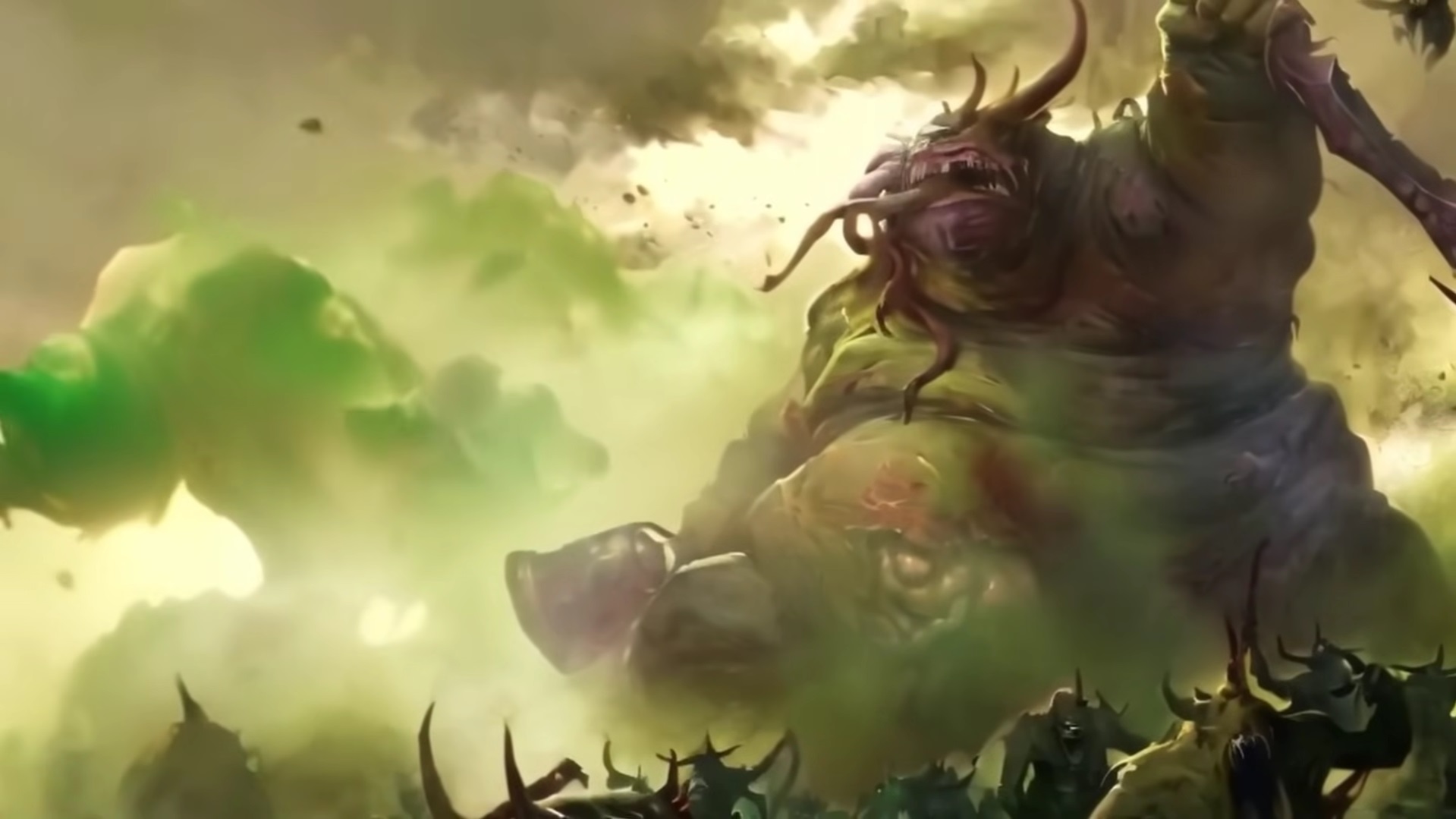Great Unclean One Chaos Greater Daemon of Nurgle

The Great Unclean One: Nurgle’s Paternal Plaguebringers
This is a very cool piece of art of a Great Unclean in the Warhammer Universe.
The Form of the Great Unclean One
The Great Unclean One is a towering, putrid figure in the Warhammer 40,000 and Warhammer Fantasy universes. These Greater Daemons of Nurgle are grotesque, swollen masses of decaying flesh, covered in weeping sores and crawling with Nurglings. Their enormous bodies are riddled with open wounds, leaking foul fluids, yet they carry themselves with an unsettling, almost jovial presence. Despite their horrific appearance, they exude a strange warmth, as if welcoming mortals into their decayed embrace. This contrast between festering horror and paternal benevolence makes them one of the most unique beings in Chaos.
Warriors and Plague Bearers
Though bloated and seemingly slow, Great Unclean Ones are terrifyingly powerful warriors on the battlefield. They wield massive rusted swords, filth-encrusted flails, or even staffs of sorcerous corruption, each weapon imbued with the raw power of Nurgle’s endless plagues. Their thick, rotting flesh can withstand immense punishment, making them nearly impervious to conventional weapons. Wherever they tread, disease follows, infecting both the land and those unfortunate enough to stand in their path. To face a Great Unclean One is to battle against inevitable corruption and unrelenting decay.
High Priests of Nurgle
Beyond their role as monstrous warriors, Great Unclean Ones are also the highest-ranking priests of Nurgle. They spread their god’s gifts—plagues, rot, and despair—with a disturbing sense of joy and purpose. They see disease not as a curse, but as a blessing, a means of renewal and transformation. Mortals infected by their touch are regarded with love, as if being initiated into a grander, more glorious existence. To them, suffering is not something to be feared but embraced, for it is simply Nurgle’s way of showing his affection.
The Nurglings and Their Joyful Rot
Great Unclean Ones are never alone, as they are constantly surrounded by swarms of Nurglings. These small, mischievous daemons are birthed from the very wounds and sores of their larger counterpart, tumbling out in droves to spread more filth. They giggle and play, treating the battlefield as their playground, delighting in the suffering of others. Unlike other daemons, Nurglings are not mindlessly cruel but rather childlike in their glee, viewing rot and disease as sources of endless amusement. Their infectious energy makes the presence of a Great Unclean One feel almost festive—if one ignores the overwhelming stench of decay.
The Cheerful Demeanor of Decay
Perhaps the most unsettling trait of a Great Unclean One is its personality. Unlike the wrathful rage of Khorne’s daemons or the twisted deceit of Tzeentch’s minions, Nurgle’s greatest creations radiate a sickly warmth. They see themselves as fatherly figures, caring for their “children” in a deeply disturbing way. To them, every plague-spreading moment is an act of love, and every suffering soul is a precious gift to be nurtured. This bizarre combination of rot and affection is what makes them so unnerving—few beings can bring about such horror while wearing a smile.
The Cycle of Life and Death
Despite their grotesque nature, Great Unclean Ones symbolize more than just death and ruin. They embody the cycle of life—decay leading to new growth, sickness leading to change. In their own twisted way, they see themselves as forces of renewal, ensuring that nothing remains stagnant. This is what makes Nurgle’s daemons so insidiously compelling: they do not destroy for the sake of destruction, but rather because they see it as a necessary, even beautiful, part of existence. In the end, the Great Unclean One is not just a monster—it is the warm, rotting embrace of time itself.

